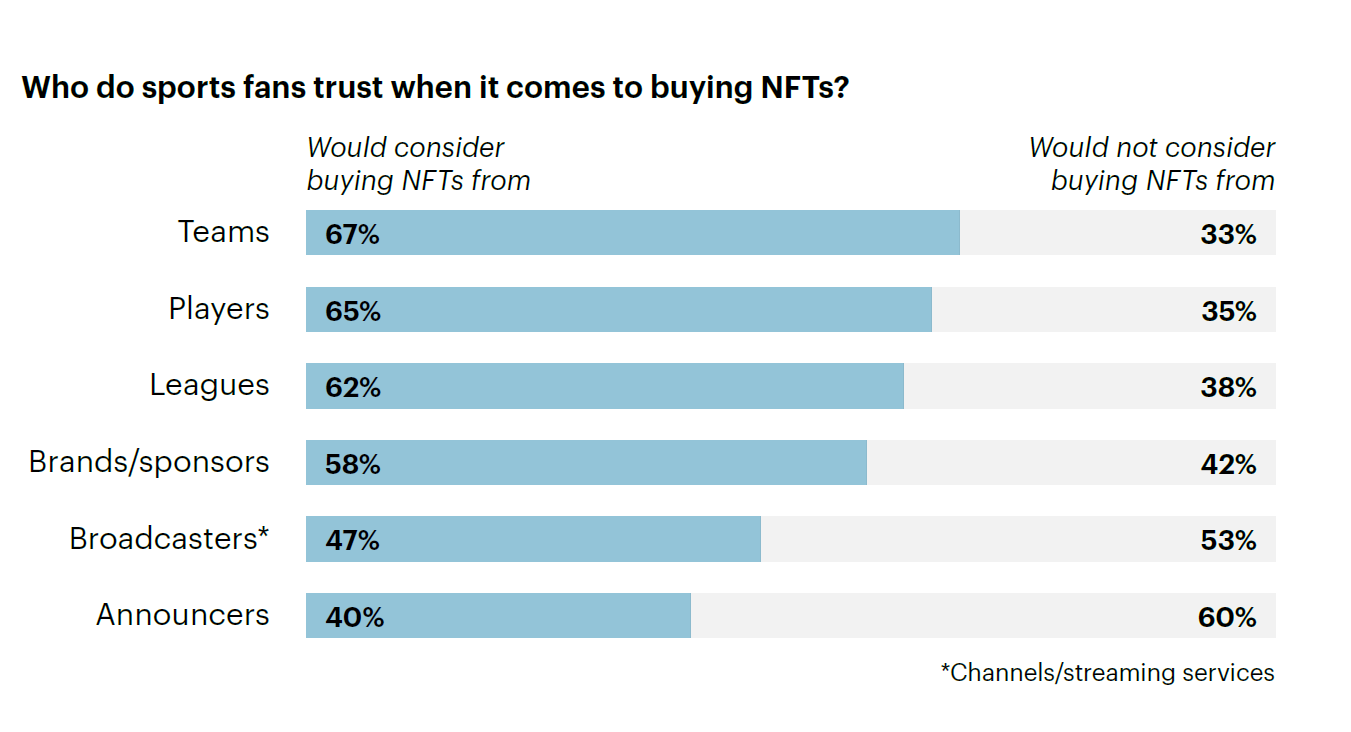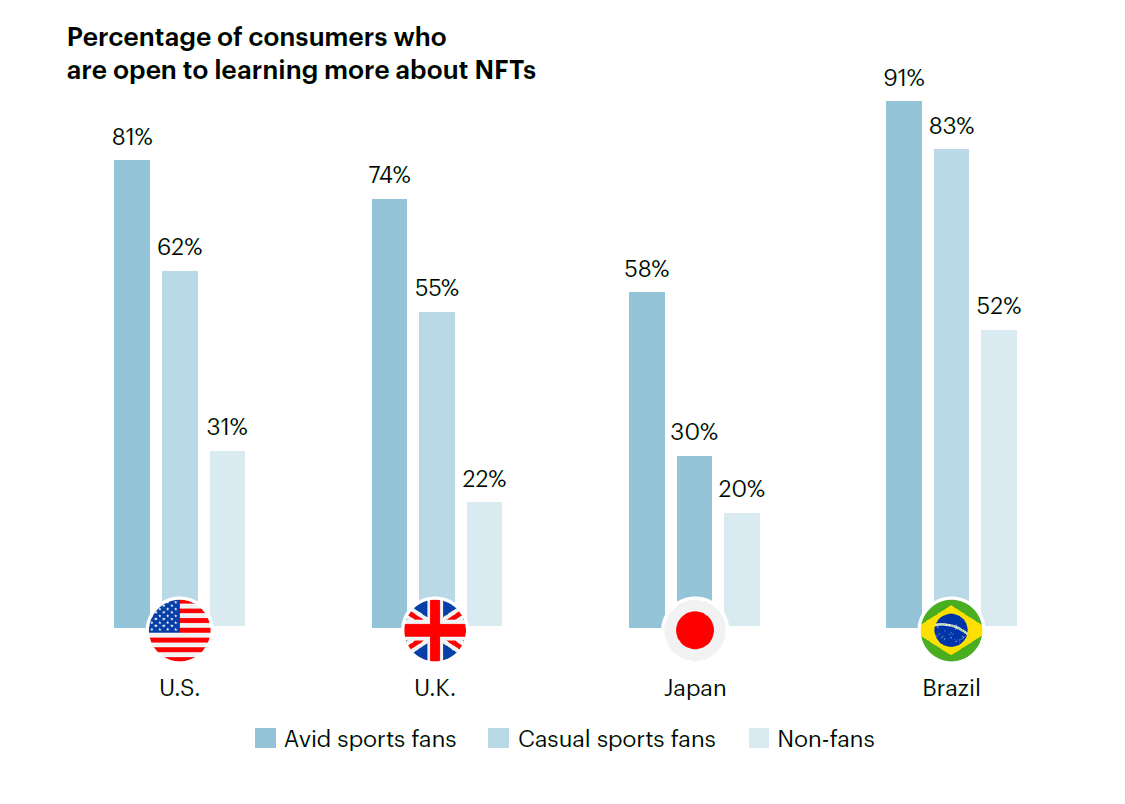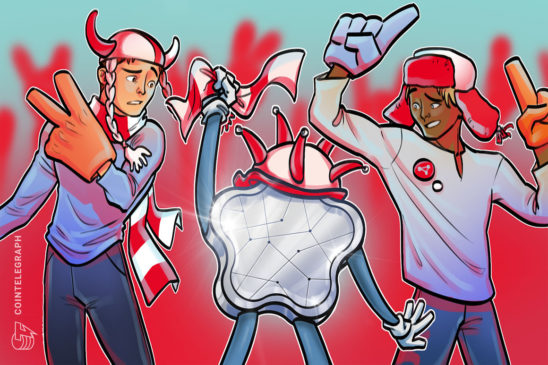The heavy involvement of the sports ecosystem is what expedited nonfungible tokens’ (NFT) mainstream adoption as the teams and players leveraged the technology for fan engagement. However, sports fans revealed their interest in moving beyond the hype and making investments based on knowledge about NFTs and trust in the issuers.
The prolonged crypto winter razed off the inflated floor prices across the NFT ecosystem, inadvertently changing investor sentiment and forcing users to rethink their long-term investment strategies. A study released by the National Research Group (NRG) revealed an openness among sports fans to learn about NFTs as they await a greener market.
In June 2022, NFT sales plummeted to one-year lows — signaling a momentary end of the NFT hype. Surveying 3,250 sports fans across the United States, United Kingdom, Japan and Brazil, NRG’s research revealed heightened fear of losing money or getting scammed as some of the biggest deterrents to purchasing NFTs.
Out of the lot, only 15% of the respondents had complete trust in NFT marketplaces, while 30% indicated little or no trust in them. The survey revealed that “this problem is particularly acute in Japan, where 4 in 10 consumers have low trust in NFT marketplaces.”

Despite the geopolitical differences, investors from all four countries unanimously agreed on the need for stricter regulations on NFTs, considering factors including age restrictions and risk tolerances.

Across the US, UK, Japan and Brazil, 58% of sports fans believe to have some level of understanding regarding NFTs. Additionally, 54% (or 1,755) of the respondents believe that NFTs have positively impacted their favorite sports.
Related: NFT sales will fund the restoration of physical monuments in Ukraine
Ukraine’s Ministry of Culture and Information Policy told Cointelegraph about the government’s intention to use sales proceeds from NFTs to restore physical artwork.
According to the ministry, proceeds from the sales will go toward “the restoration of Ukrainian cultural institutions,” many of which have been damaged or destroyed amid an ongoing war with Russia.



